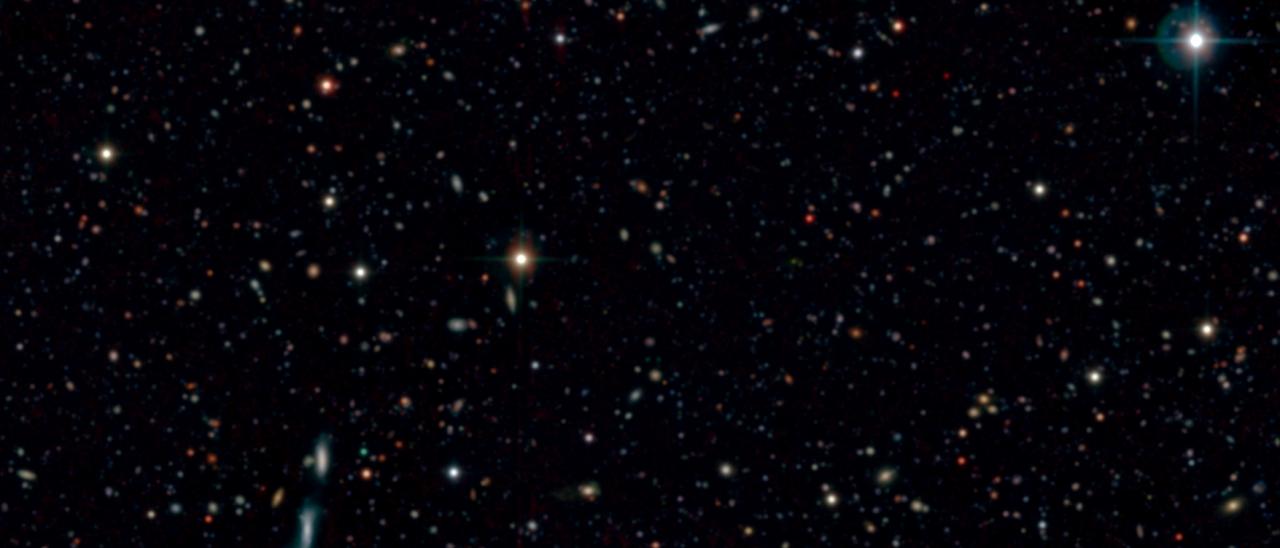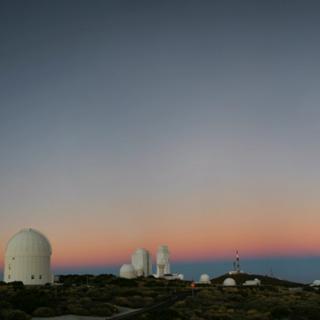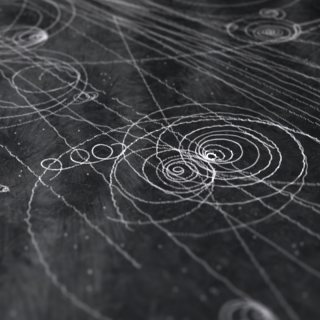General
El estudio de la evolución de las galaxias es un tema crucial de la Astronomía Extragaláctica moderna. Permite vincular las galaxias locales con las primeras que existieron en el universo. Pero para poder abordarlo es preciso obtener censos estadísticamente significativos de galaxias de distintas luminosidades, a distintas distancias. Observacionalmente implica ser capaz de observar objetos muy débiles, utilizando distintas técnicas y a distintas longitudes de onda, desde el dominio centimétrico hasta los rayos-gamma, no solo para estudiar distintos procesos físicos, y determinar las distribuciones espectrales de energía de las galaxias, sino debido al desplazamiento al rojo de las galaxias distantes.
El proyecto que aquí se presenta está encaminado a explotar un conjunto de censos de galaxias multi-rango espectral de las mismas zonas del cielo que, combinados, constituyen la base de datos que llamamos "Evolución". Esta base de datos esta formada por los censos denominados OTELO y GLACE, de galaxias de campo y en cúmulos, respectivamente, obtenidos utilizando los filtros sintonizables ópticos de OSIRIS en el telescopio GTC; el censo Lockman SpReSO obtenido mediante espectroscopía óptica multiobjeto empleando OSIRIS en el GTC; y PEP, consistente en imágenes en el lejano infrarrojo obtenidas con el observatorio espacial Herschel de la ESA. Esta base de datos está enriquecida con datos auxiliares profundos procedentes de otros instrumentos, que abarcan desde las ondas centimétricas (utilizando el VLA) hasta los rayos X (utilizando el satélite XMM de la ESA).
Por tanto, "Evolución" proporciona, para miles de galaxias a desplazamientos al rojo entre 0.4 y 7.0, su morfología y distancias, las luminosidades en líneas de emisión de distintos elementos, y del continuo óptico, infrarrojo cercano y lejano y rayos-X. El censo GLACE, de cúmulos de galaxias, obtenido mediante las mismas técnicas y a las mismas longitudes de onda que OTELO, permite comparar la evolución de las galaxias de campo con las de cúmulo, estudiando, así, la influencia del entorno. En suma, este conjunto de censos, permiten abordar varios aspectos críticos de la evolución de las galaxias tales como la variación de la tasa de formación estelar, la metalicidad, la luminosidad bolométrica, la extinción y la potencia de acreción de núcleos galácticos activos, entre otros temas, en función del tiempo cósmico y de la densidad ambiental. Todo ello incluso para las galaxias más débiles o las más distantes, al límite de las posibilidades de la actual instrumentación astronómica. Asimismo, la combinación de observaciones profundas a distintas longitudes de onda permitirá arrojar luz sobre las relaciones entre la confusa fauna de objetos observada a altos desplazamientos al rojo, y que nuestro grado de desconocimiento solo permite clasificar, hasta ahora, por la manera cómo se han detectado.
Miembros
Actividad científica
Publicaciones relacionadas
-
The Herschel PEP/HerMES luminosity function - I. Probing the evolution of PACS selected Galaxies to z ≃ 4
We exploit the deep and extended far-IR data sets (at 70, 100 and 160 μm) of the Herschel Guaranteed Time Observation (GTO) PACS Evolutionary Probe (PEP) Survey, in combination with the Herschel Multi-tiered Extragalactic Survey data at 250, 350 and 500 μm, to derive the evolution of the rest-frame 35-, 60-, 90- and total infrared (IR) luminosity
Gruppioni, C. et al.Fecha de publicación:
62013 -
CL0024+1652 as seen by the Galaxy Cluster Evolution survey (GLACE)
The GaLAxy Cluster Evolution survey (GLACE) is aimed to study the evolution of emission line galaxies in clusters across the cosmic time. It takes advantage of the tunable filter mode of OSIRIS (first light instrument of GTC) to scan Hα/[N II], Hβ, [O II] 3727 and [O III] 5007 searching for star formation activity and AGNs in clusters in three
Pérez-Martínez, R. et al.Fecha de publicación:
42013 -
X-ray luminosity functions of different morphological and X-ray type AGN populations
Luminosity functions are one of the most important observational clues when studying galaxy evolution over cosmic time. In this paper we present the X-ray luminosity functions for X-ray detected AGN in the SXDS and GWS fields. The limiting fluxes of our samples are 9.0 ×10-15 and 4.8 ×10-16 erg cm-2 s-1 in the 0.5-7.0 keV band in the two fields
Pović, M. et al.Fecha de publicación:
32013 -
The Filling Factor-Radius Relation for 58 H II Regions across the Disk of NGC 6946
Using the OSIRIS tunable narrowband imager on the 10.4 m GTC (La Palma), we have mapped the SAB(rs)cd galaxy NGC 6946 over a ~7.3 × 7.5 arcmin2 field in the emission lines of the [S II] λλ6717, 6731 doublet, and in Hα. From these maps we have produced catalogs of the Hα luminosities and effective radii of 557 H II regions across the disk, and
Alfaro, Emilio J. et al.Fecha de publicación:
32013 -
Probing nuclear activity versus star formation at z ˜ 0.8 using near-infrared multi-object spectroscopy
We present near-infrared (NIR) spectroscopic observations of 28 X-ray and mid-infrared selected sources at a median redshift of z ˜ 0.8 in the Extended Groth Strip (EGS). To date this is the largest compilation of NIR spectra of active galactic nuclei (AGN) at this redshift. The data were obtained using the multi-object spectroscopic mode of the
Rodríguez-Eugenio, N. et al.Fecha de publicación:
32013 -
Evolution of the cosmological horizons in a universe with countably infinitely many state equations
This paper is the second of two papers devoted to the study of the evolution of the cosmological horizons (particle and event horizons). Specifically, in this paper we consider a general accelerated universe with countably infinitely many constant state equations, and we obtain simple expressions in terms of their respective recession velocities
Cepa, J. et al.Fecha de publicación:
22013 -
Evolution of the cosmological horizons in a concordance universe
The particle and event horizons are widely known and studied concepts, but the study of their properties, in particular their evolution, have only been done so far considering a single state equation in a decelerating universe. This paper is the first of two where we study this problem from a general point of view. Specifically, this paper is
Cepa, Jordi et al.Fecha de publicación:
122012 -
SHARDS: An Optical Spectro-photometric Survey of Distant Galaxies
We present the Survey for High-z Absorption Red and Dead Sources (SHARDS), an ESO/GTC Large Program carried out using the OSIRIS instrument on the 10.4 m Gran Telescopio Canarias (GTC). SHARDS is an ultra-deep optical spectro-photometric survey of the GOODS-N field covering 130 arcmin2 at wavelengths between 500 and 950 nm with 24 contiguous medium
Zamorano, Jaime et al.Fecha de publicación:
12013 -
Rotational effects on the negative magnetic pressure instability
Context. The surface layers of the Sun are strongly stratified. In the presence of turbulence with a weak mean magnetic field, a large-scale instability resulting in the formation of nonuniform magnetic structures, can be excited on the scale of many (more than ten) turbulent eddies (or convection cells). This instability is caused by a negative
Losada, I.R. et al.Fecha de publicación:
122012 -
The spectroscopic evolution of the recurrent nova T Pyxidis during its 2011 outburst. I. The optically thick phase and the origin of moving lines in novae
Aims: We aim to derive the physical properties of the recurrent nova T Pyx and the structure of the ejecta during the early stages of expansion of the 2011 outburst. Methods: The nova was observed with high resolution spectroscopy (R ≈ 65 000), from one day after discovery of the outburst and until the last visibility of the star at the end of May
Shore, S. N. et al.Fecha de publicación:
92011 -
The PEP survey: clustering of infrared-selected galaxies and structure formation at z ˜ 2 in GOODS-South
This paper presents the first direct estimate of the 3D clustering properties of far-infrared sources up to z˜ 3. This has been possible thanks to the PACS Evolutionary Probe (PEP) survey of the GOODS-South field performed with the PACS instrument on board the Herschel satellite. 550 and 502 sources were detected respectively in the 100- and 160-μm
Magliocchetti, M. et al.Fecha de publicación:
92011 -
Gran Telescopio Canarias OSIRIS transiting exoplanet atmospheric survey: detection of potassium in XO-2b from narrowband spectrophotometry
We present Gran Telescopio Canarias (GTC) optical transit narrowband photometry of the hot-Jupiter exoplanet XO-2b using the OSIRIS instrument. This unique instrument has the capabilities to deliver high-cadence narrowband photometric lightcurves, allowing us to probe the atmospheric composition of hot Jupiters from the ground. The observations
Sing, D. K. et al.Fecha de publicación:
32011 -
Discovery of a high-z protocluster with tunable filters: the case of 6C0140+326 at z= 4.4
We present the first results obtained using a tunable narrow-band filter in the search for high-z protoclusters. Using the recently commissioned red tunable filter on the Gran Telescopio Canarias, we have searched for Lyα emitters in a 75 arcmin2 field centred on the z= 4.413 radio galaxy 6C0140+326. With three different wavelength tunings, we find
Kuiper, E. et al.Fecha de publicación:
102011 -
Building the cosmic infrared background brick by brick with Herschel/PEP
The cosmic infrared background (CIB) includes roughly half of the energy radiated by all galaxies at all wavelengths across cosmic time, as observed at the present epoch. The PACS Evolutionary Probe (PEP) survey is exploited here to study the CIB and its redshift differential, at 70, 100 and 160 μm, where the background peaks. Combining PACS
Berta, S. et al.Fecha de publicación:
82011 -
Spatially Resolved Spectroscopy and Chemical History of Star-forming Galaxies in the Hercules Cluster: The Effects of the Environment
Spatially resolved spectroscopy has been obtained for a sample of 27 star-forming (SF) galaxies selected from our deep Hα survey of the Hercules cluster. We have applied spectral synthesis models to all emission-line spectra of this sample using the population synthesis code STARLIGHT and have obtained fundamental parameters of stellar components
Petropoulou, V. et al.Fecha de publicación:
62011 -
Comparison of star formation rates from Hα and infrared luminosity as seen by Herschel
We empirically MD test the relation between the SFR(LIR) derived from the infrared luminosity, LIR, and the SFR(Hα) derived from the Hα emission line luminosity using simple conversion relations. We use a sample of 474 galaxies at z = 0.06-0.46 with both Hα detection [from 20k redshift Cosmological Evolution (zCOSMOS) survey] and new far-IR
Domínguez-Sánchez, H. et al.Fecha de publicación:
102012 -
Two-dimensional metallicity distribution of the ionized gas in NGC 628 and NGC 6946
Aims: We present here two H II region catalogues with azimuthal resolution for the two grand design galaxies NGC 628 and NGC 6946. With the help of these catalogues, we study several properties of the star-forming processes occurring in spiral galaxies. Methods: We obtained direct imaging in the narrow-band filters centred at Hα, Hβ, [O II]λ3727
Cedrés, B. et al.Fecha de publicación:
92012 -
The mean star formation rate of X-ray selected active galaxies and its evolution from z ~ 2.5: results from PEP-Herschel
We study relationships between star-formation rate (SFR) and the accretion luminosity and nuclear obscuration of X-ray selected active galactic nuclei (AGNs) using a combination of deep far-infrared (FIR) and X-ray data in three key extragalactic survey fields (GOODS-South, GOODS-North and COSMOS), as part of the PACS Evolutionary Probe (PEP)
Rosario, D. J. et al.Fecha de publicación:
92012 -
The Impact of Evolving Infrared Spectral Energy Distributions of Galaxies on Star Formation Rate Estimates
We combine Herschel-Photodetector Array Camera and Spectrometer (PACS) data from the PACS Evolutionary Probe (PEP) program with Spitzer 24 μm and 16 μm photometry and ultra deep Infrared Spectrograph (IRS) mid-infrared spectra to measure the mid- to far-infrared spectral energy distribution (SED) of 0.7 < z < 2.5 normal star-forming galaxies (SFGs)
Nordon, R. et al.Fecha de publicación:
22012 -
The effect of environment on star forming galaxies at redshift. I. First insight from PACS
We use deep 70, 100 and 160 μm observations taken with PACS, the Photodetector Array Camera and Spectrometer on board of Herschel, as part of the PACS Evolutionary Probe (PEP) guaranteed time, to study the relation between star formation rate and environment at redshift ~ 1 in the GOODS-S and GOODS-N fields. We use the SDSS spectroscopic catalog to
Popesso, P. et al.Fecha de publicación:
82011



